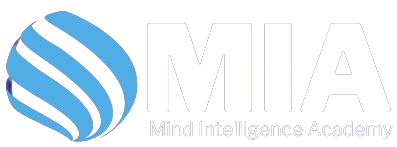Introduction to Computers
What is a Computer? A computer is an electronic device that manipulates information or data. It has the ability to store, retrieve, and process data. Computers are used to perform a variety of tasks such as browsing the internet, writing documents, playing games, managing finances, and much more.
History and Evolution of Computers
- Early Computing Devices: The abacus, invented around 2000 BC, is considered one of the earliest computing devices. Over the centuries, mechanical calculators like the Pascaline and the Difference Engine were developed.
- First Generation (1940s-1950s): The first electronic computers used vacuum tubes. ENIAC, developed in the 1940s, is a notable example.
- Second Generation (1950s-1960s): Transistors replaced vacuum tubes, making computers smaller, faster, and more reliable.
- Third Generation (1960s-1970s): Integrated circuits further reduced the size and cost of computers while increasing their power.
- Fourth Generation (1970s-Present): Microprocessors, the hallmark of this era, led to the development of personal computers (PCs).
- Future Trends: Quantum computing, artificial intelligence, and nanotechnology represent the frontier of computing advancements.
More Detailed analysis of Computers from 1980s to Present Day.
- 1980s:
- Personal Computers (PCs): Introduction of affordable personal computers for home use, like the IBM PC and Apple Macintosh.
- Components: Typically included a CPU, RAM, floppy disk drive, and a CRT monitor.
- Operating Systems: MS-DOS, early versions of Windows, and Apple’s System software.
- 1990s:
- Advancements: Significant improvements in processing power, graphical capabilities, and storage.
- Internet Era: Rise of the World Wide Web, making the internet accessible to the general public.
- Popular Models: Windows 95/98 PCs, Apple’s iMac.
- Components: Introduction of CD-ROM drives, more advanced CPUs like Intel Pentium, and larger hard drives.
- 2000s:
- Portability: Introduction and popularization of laptops, making computing more mobile.
- Multimedia: Enhanced multimedia capabilities with better graphics cards and audio systems.
- Internet and Connectivity: Broadband internet became widespread, Wi-Fi introduced, and USB became the standard for connectivity.
- Components: Faster processors, LCD monitors, USB flash drives.
- 2010s:
- Mobile Computing: Emergence of tablets and smartphones with significant computing power.
- Cloud Computing: Shift towards cloud storage and services, reducing reliance on local storage.
- Solid-State Drives (SSD): Became more common, offering faster data access speeds compared to traditional HDDs.
- Components: Multi-core processors, high-resolution displays, and energy-efficient components.
- 2020s:
- Advanced Performance: Introduction of AI and machine learning capabilities in consumer computers.
- Sustainability: Focus on energy-efficient and eco-friendly components.
- 5G and Connectivity: Wider adoption of 5G technology for faster internet speeds.
- Components: Continued advancements in CPU and GPU technology, widespread use of NVMe SSDs, and high-refresh-rate monitors.
Types of Computers
- Desktops: Designed to be stationary, desktops offer high performance and are easy to upgrade. They are ideal for tasks that require significant computing power, such as gaming, video editing, and software development.
- Laptops: Portable computers that integrate all components into a single unit. Laptops vary in size and power, from lightweight ultrabooks to powerful gaming laptops.
- Tablets: Compact and highly portable, tablets use touchscreens for input. They are excellent for media consumption, casual browsing, and light productivity tasks.
Servers: Powerful machines designed to manage network resources. Servers host websites, manage email, store data, and run enterprise applications.
Exercise Files

